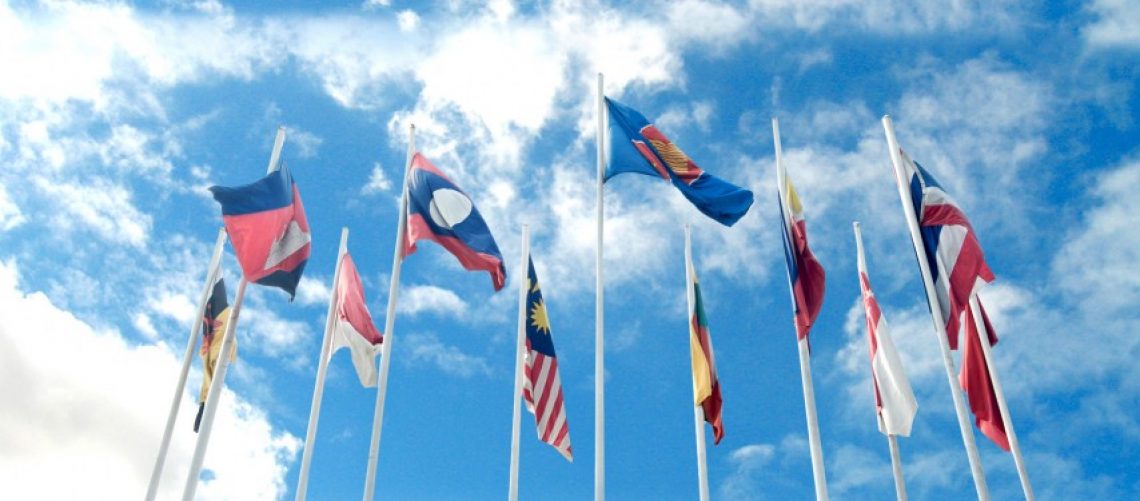Following is the joint press statement of the United Nations and the Association of Southeast Asian Nations (ASEAN) following their ministerial-level meeting in New York on 24 September:
The ASEAN Foreign Ministers’ meeting with the United Nations Secretary-General and the President of the sixty-seventh session of the United Nations General Assembly (ASEAN-United Nations Ministerial Meeting, or AUMM) was held on 28 September 2012 at United Nations Headquarters in New York. The Meeting was chaired by Hor Namhong, Deputy Prime Minister and Minister for Foreign Affairs and International Cooperation of Cambodia; Ban Ki-moon, Secretary-General of the United Nations; and Vuk Jeremić, President of the sixty-seventh General Assembly. Surin Pitsuwan, Secretary-General of ASEAN, was also in attendance.
This was the first AUMM since the adoption of the Joint Declaration on Comprehensive Partnership between ASEAN and the United Nations at the fourth ASEAN-United Nations Summit in Bali last November. In this regard, the AUMM participants reviewed the implementation of the ASEAN-United Nations Comprehensive Partnership, based on the joint report by the Secretariats of ASEAN and the United Nations. They also held discussions on the preparations for, as well as key issues to be raised at, the forthcoming fifth ASEAN-United Nations Summit, which is scheduled to take place in Phnom Penh on 20 November 2012. The participants welcomed the institution of a process of regular dialogue between the Secretariats of the two organizations and called on them to further enhance their cooperation, as called for in the Joint Declaration.
The AUMM was briefed by the ASEAN Chair on the continuing efforts of ASEAN to establish the ASEAN Community by 2015. The AUMM was also briefed by the United Nations Secretary-General on the Organization’s global and regional priorities. The President of the General Assembly spoke about the priorities of the United Nations during the current session of the General Assembly, which is focusing on the theme of “Adjustment or settlement of international disputes or situations by peaceful means”.
ASEAN Ministers informed the meeting that, as part of the international community, ASEAN was determined to contribute to, and be part of, the solution to the many global challenges currently at hand. The United Nations Secretary-General and the President of the General Assembly reaffirmed the readiness of the United Nations to work closely with ASEAN to enhance ASEAN’s capacity to fulfil these objectives, in particular through concrete collaborative activities to be undertaken within the framework of the ASEAN-United Nations Comprehensive Partnership.
The meeting also discussed various regional and international issues, particularly those of common concern and interest to ASEAN and the United Nations that are on the agenda of the sixty-seventh session of the United Nations General Assembly, including education, global health, climate change, disaster management, conflict resolution, human rights, global financial crisis, sustainable development and the post-2015 agenda, peacekeeping operations and peacebuilding.
- ABOUT ASEANThe Association of Southeast Asian Nations, or ASEAN, was established on 8 August 1967 in Bangkok, Thailand, with the signing of the ASEAN Declaration (Bangkok Declaration) by the Founding Fathers of ASEAN: Indonesia, Malaysia, Philippines, Singapore and Thailand. Brunei Darussalam joined ASEAN on 7 January 1984, followed by Viet Nam on 28 July 1995, Lao PDR and Myanmar on 23 July 1997, and Cambodia on 30 April 1999, making up what is today the ten Member States of ASEAN.Menu
- WHAT WE DO
ASEAN organs always strive to achieve ASEAN’s goals and objectives, the Secretary-General of ASEAN and the ASEAN Secretariat shall be functioned as coordinating Secretariat to help facilitate effective decision-making withing and amongst ASEAN bodies. In addition, each Member State shall appoint a Permanent Representative to liaise with Secretary-General of ASEAN and the ASEAN Secretariat
Menu - WHO WE WORK WITH
ASEAN shall develop friendly relations and mutually beneficial dialogues, cooperation and partnerships with countries and sub-regional, regional and international organisations and institutions. This includes external partners, ASEAN entities, human rights bodies, non-ASEAN Member States Ambassadors to ASEAN, ASEAN committees in third countries and international organisations, as well as international / regional organisations.
Menu - OUR COMMUNITIES
The rodmap for an ASEAN Community (2009-2015) was declared by the leaders in 2009. The ASEAN Community, anchored on three community pillars: Political-Security Community, Economic Community, Socio-Cultural Community was launched in 2015. The ASEAN 2025: Forging Ahead Together was introduced in 2015 as a Post-2015 Vision. It comprises the ASEAN Community Vision 2025, the ASEAN Political-Security Community Blueprint 2025, the ASEAN Economic Community Blueprint 2025 and the ASEAN Socio-Cultural Community Blueprint 2025
Menu - SITEMAP





